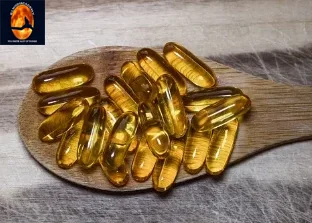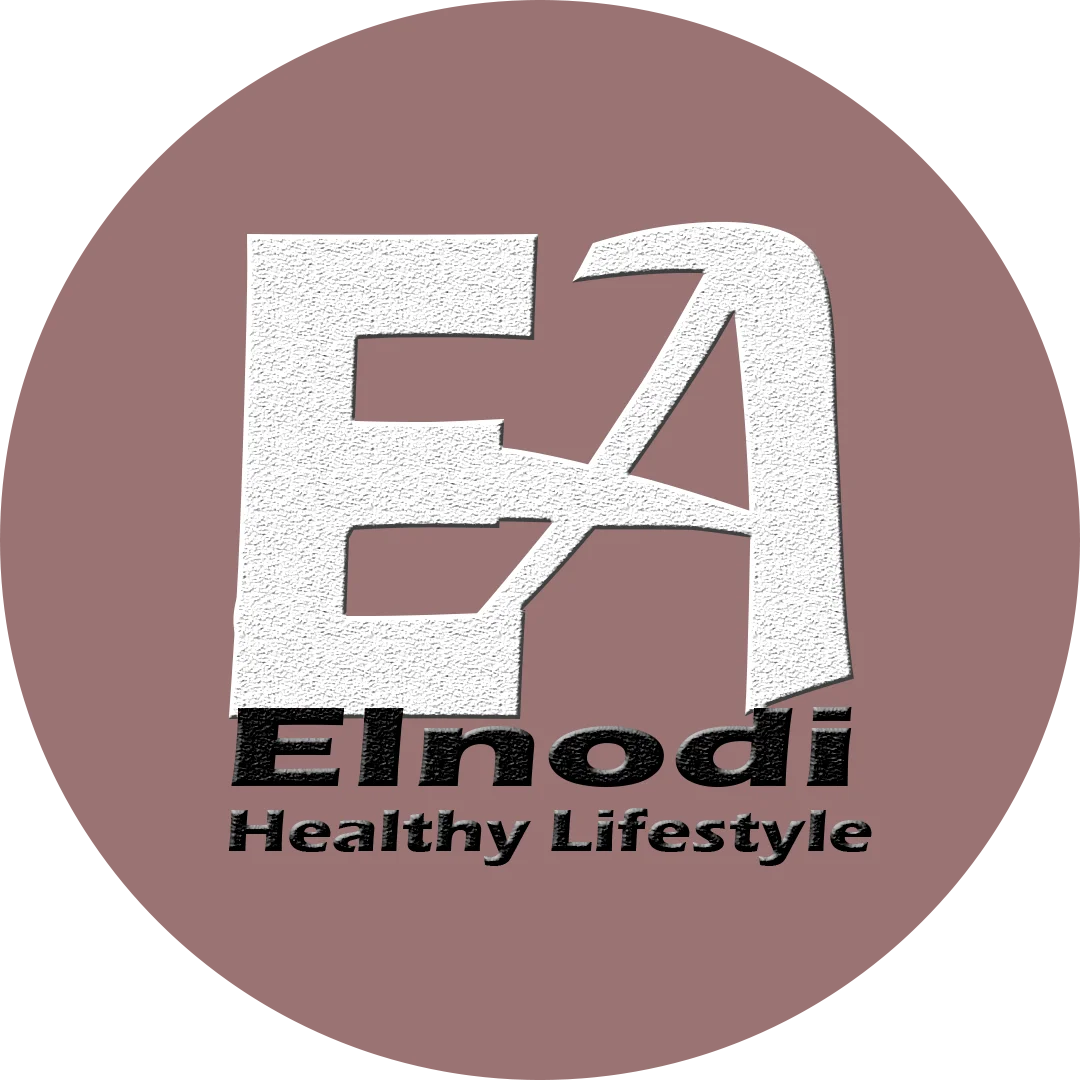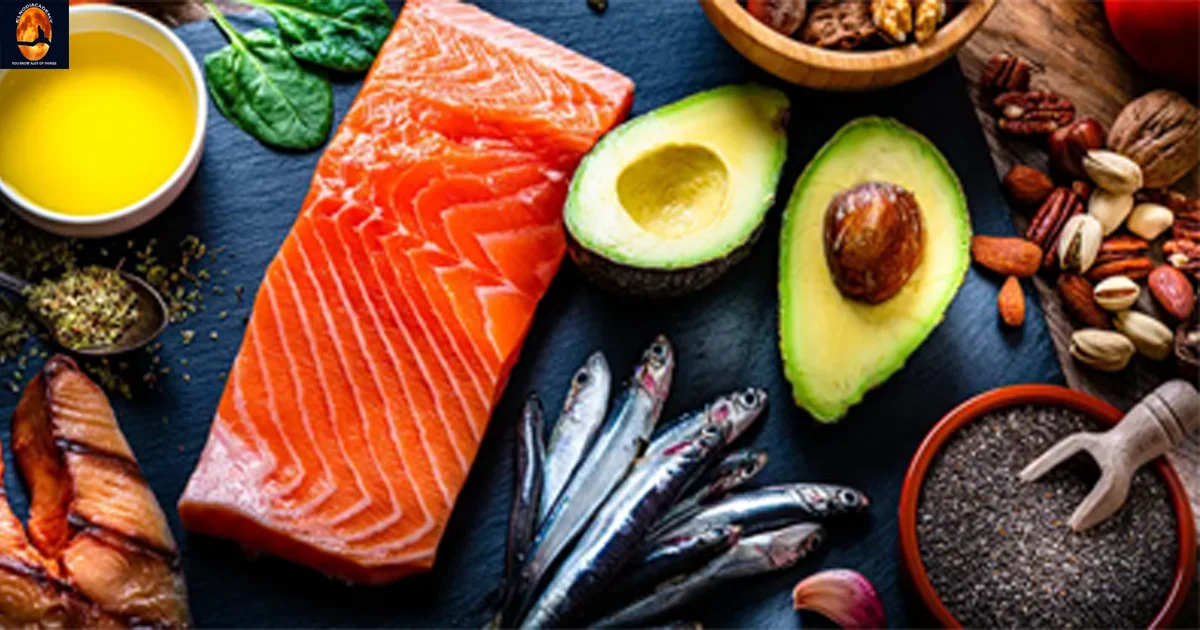An Overview of Omega-3
Omega-3 is one of the polyunsaturated fatty acids, which can be added to the diet from various food sources as the body cannot manufacture it on its own, such as fish; Where it is available as eicosapentaenoic acid or EPA, and docosahexaenoic acid and DHA.
And some plant sources; Which is available as alpha-linolenic acid or ALA, although long-chain omega-3 fatty acids such as eicosapentaenoic acid and docosahexaenoic acid can be synthesized from alpha-linolenic acid in the body, it is recommended to consume foods rich in EPA and DHA; Due to the low efficiency of the manufacture of this acid.
The body needs omega-3 foods acid to help with some vital functions, such as; Formation of brain cells, and maintaining heart health, and omega-3 constitutes approximately 5%-10% of the total calories needed by the body.
Top 10 Sources of omega-3 foods
What food contains the most omega-3? Wild-caught, fatty fish are the best sources. Because many varieties of seafood are naturally high in DHA and EPA, nutritionists and organizations like the American Heart Association advise eating fish several times per week.
Another concentrated source is flaxseed oil, which has almost seven grams of ALA per tablespoon and is also highly high in ALA. However, ALA is not the best source because it is not as effectively absorbed as DHA and EPA.
Although the body can convert some ALA into useable DHA and EPA, this process is less effective than obtaining DHA and EPA from dietary sources. Fish and seafood are therefore better choices than flaxseed oil and other nuts and seeds.
Although EPA and DHA are the favored omega-3 fats, all of them are helpful and recommended.
The top 10 omega-3 food meals are shown below (percentages are based on 4,000 mg of total omega-3s per day):
- Flaxseed oil:

7,260 mg per tablespoon, although flaxseed oil is strong in ALA rather than DHA/EPA.
2. Atlantic Mackerel:

1 cup of cooked Atlantic Mackerel contains 6,982 milligrams (174 percent DV)
3. Salmon Fish Oil:

4.767 grams make up 1 tablespoon (119 percent DV)
4. Cod Liver Oil:

1 tablespoon contains 2.664 mg of cod liver oil (66 percent DV)
5. Walnuts:

1/4 cup of walnuts contains 2,664 milligrams (66 percent DV)
6. Chia Seeds:

2,457 milligrams of chia seeds per tablespoon (61 percent DV)
7. Herring:

3 ounces of herring contains 1,885 milligrams (47 percent DV)
8. Flaxseeds (ground):

There are 1,597 mg of ground flaxseed in a tablespoon (39 percent DV)
9. Albacore Tuna:

3 ounces of albacore tuna contains 1,414 milligrams (35 percent DV)
10. Sardines:

Sardines contain 1,363 milligrams (3.75 ounces) per can (34 percent DV)
Animal Sources of Omega 3
The following table shows the content of some animal sources per gram of different omega-3 foods acids; EPA, DHA, and ALA:
| animal source | ALA | DHA | EPA |
|---|---|---|---|
| canned salmon (85 grams) | 0.04 | 0.63 | 0.28 |
| Cooked herring (85 grams) | – | 0.94 | 0.77 |
| Mayonnaise sauce (1 tablespoon) | 0.74 | – | – |
| cooked oysters (85 grams) | 0.14 | 0.23 | 0.30 |
| Cooked shrimp (85 grams | – | 0.12 | 0.12 |
| canned tuna (85 grams) | – | 0.17 | 0.02 |
| Cooked cod (85 grams) | – | 0.10 | 0.04 |
| cooked eggs (1 egg) | – | 0.03 | – |
| Cooked chicken breast (85 grams) | – | 0.02 | 0.01 |
| Canned sardines (85 grams | – | 0.74 | 0.45 |
| Low-fat milk 1% (1 cup) | 0.01 | – | – |
It’s challenging to propose an omega-3 foods dosage.
The omega-3 fatty acids eicosapentaenoic acid (EPA) and docosahexaenoic acid (DHA), give significant advantages for cellular and metabolic health throughout the lifetime, according to decades’ worth of scientific investigations.
One of the first questions individuals have after learning about these advantages is how much EPA and DHA they should consume daily. Because a variety of things affect a person’s omega-3 status, even though this may seem like a straightforward inquiry, the solution is frequently more difficult than it appears.
Many health organizations have published their own dosing guidelines based on the existing data and various other factors to help address this dosage question. 3,4 These organizations normally advise healthy adults to eat 500 mg or less of EPA and DHA daily
Although they know that higher doses are frequently required for those with metabolic risk factors and during particular developmental stages, such as pregnancy and infancy
Many universal dose recommendations don’t take specific factors into account.
Although these general guidelines are beneficial, they frequently result in significant variation between people since they ignore several known genetic and environmental factors that can impact omega-3 metabolism.
Given the evidence that higher doses of EPA and DHA are safe, well-tolerated, and more effective at raising blood levels of omega-3 foods than modest dosages, it is reasonable to assume that many people would benefit from ingesting a far higher amount than those previously advised.
Our cells largely rely on the omega-3 fatty acids EPA and DHA.
Nearly all the 37 trillion cells that make up the average human body rely on the omega-3 fatty acids EPA and DHA to maintain basic everyday cellular functions.
Alpha-linoleic acid (ALA), a fatty acid precursor found in flaxseed, walnuts, and canola oil, can be used by humans to synthesize EPA and DHA. However, because ALA’s conversion into EPA and DHA is very low, it is typically advised that EPA and DHA be consumed directly through dietary sources like cold-water fatty fish and/or fish oil supplements.
Following ingestion, we incorporate EPA and DHA into the phospholipids that make up cell membranes. Here, they have a direct and indirect impact on cellular function by increasing the fluidity, flexibility, and/or permeability of cell membranes.
These capabilities are essential for many daily cell functions, including receiving, analyzing, and reacting to data from neighboring cells and signals from the outside world. Importantly, since cells make up organs, getting enough omega-3 fatty acids suggests organs may also perform more effectively.
Getting enough omega-3 fatty acids can improve overall health since we link healthy organ function to better general health.
In conclusion, fatty acids play a variety of roles in the body, including those of structural lipids in every cell and signaling precursors, which affect nearly every aspect of health and disease.
Larger doses of EPA and DHA are safe and may even be more beneficial, according to the research.
Most clinical trials examining the effects of EPA+DHA have historically erred on the side of caution by using smaller (and somewhat arbitrary) doses ranging from 250 mg per day to 1000 mg per day, despite the body’s significant need for EPA and DHA (again, 37 trillion cells depend on these dietary fats for carrying out daily cellular activities!).
While modest dosing may have been a sensible precautionary measure at an earlier stage in the literature on omega-3 foods, mounting evidence that higher doses are safe and may be more beneficial suggests that research using lower doses may not be speaking to the full potential of omega-3 foods for enhancing health.
Smaller doses are less likely to be sufficient for all persons given that some people need significantly more EPA and DHA than others because of variances in diet and metabolism.
Everybody has different needs for omega-3 fatty acids.
The quantity of omega-3 polyunsaturated fatty acids that a person’s body will need to sustain proper cellular and metabolic functions depends on several factors, as was previously mentioned.
A person’s ability to metabolize dietary fatty acids and, their status as an omega-3 fatty acid, is influenced by several factors, including age, sex, nutrition, body mass, heredity, medication use, health status, and exposure to pollutants and toxins.
This variation in omega-3 foods status also contributes to the explanation of why omega-3 research trials frequently yield contradictory outcomes.
In contrast, giving the same fixed dose to someone who consumes a diet high in fish and has no trouble metabolizing dietary fats may perfectly achieve a therapeutic EPA + DHA blood level.
As an illustration, giving a fixed dose of 1000 mg per day to someone who is severely deficient in omega-3 foods may hardly move the needle to increase omega-3 blood levels. Given this variation, EPA+DHA recommendations ought to, whenever workable, be based on each person’s unique omega-3 foods needs and requirements.
Omega-3 blood testing: Crucial figures to understand
A blood test to assess your omega-3 foods index and collaboration with your doctor to choose a dosing schedule that best meets your needs are the quickest and most effective ways to identify your omega-3 foods needs. Many businesses have offered “at-home” testing kits in recent years to help you figure out your omega-3 index.
The “ideal” amount of fish oil you should consume cannot be determined by simply knowing your omega-3 foods levels, even though this may seem like a more practical choice than conventional testing.
Those who are sincere about improving their health are urged to coordinate testing services with their primary care physician, set up a supplementation schedule, and have their blood levels of omega-3 foods tested again in three to six months to see how supplementing has affected those levels.
The omega-3 index, which is calculated as a percentage of all measures the ratio of EPA and DHA in red blood cells to the fatty acids present. If a person has an omega-3 foods index of 3.6%, this means that EPA+DHA makes up 3.6% of all the fatty acids found in their red cell membranes.
Importantly, this finding would also imply that the person has an omega-3 foods deficiency, which is linked to a wide range of detrimental health effects.
For instance, according to a study, an omega-3 foods index of less than 4% qualifies as a cardiovascular risk factor.
An index value greater than 8% is regarded as cardioprotective and is linked to a lower risk of cardiac events, cardiac death, and issues with coronary health.
In trials with Americans who did not use omega-3 supplements, the typical omega-3 foods index values ranged from 4 to 5%. (i.e., well below cardioprotective levels). These results show that ordinary Americans would benefit from boosting their omega-3 foods index through supplementation given that experts normally advise aiming for an omega-3 foods index of between 8 and 12 percent.
However, this raises a related query: how much EPA and DHA should a person consume to raise their omega-3 index? Many observational and intervention studies reveal a dose-dependent association between omega-3 supplementation and the omega-3 foods index, albeit we can only definitively answer this through testing, supplementing, and retesting. The rise in the omega-3 foods index is proportional to the dose of supplementary EPA+DHA.
Does it ever become unsafe to consume too much omega-3?
The greatest amount of omega-3 foods a person can safely consume is another commonly asked query regarding omega-3 dosage. The answer to this question is not yet known, according to the European Food Safety Authority (EFSA), a group of scientific specialists assembled by the European Union to evaluate dangers connected with the food chain.
EFSA claims that the data on omega-3 foods does not establish a maximum intake level of EPA and DHA, but that supplemental intakes of up to 5000 mg per day are well-tolerated and do not raise the risks of harmful health complications, such as prolonged bleeding or cardiovascular disease (CVD)
The oxidative stability of the supplement is crucial to consider when determining the safety of omega-3 fish oil than dosage.
Oxidative rancidity, which happens when the double bonds of a fatty acid molecule react with oxygen and breaks down causes the ‘fishy smell’ frequently associated with less fresh fish oil, creating a free radical and a chemical group.
The fatty acids in fish oils are more prone to oxidative rancidity than other dietary fats because they contain many double bonds.
People should be extremely careful when choosing high-quality, third-party tested fish oil to help ensure the freshness and safety of their fish oil since it has been demonstrated that consuming oxidized fatty acids can contribute to negative health outcomes, such as the formation of free radicals and increased susceptibility to oxidative damage to tissues.
Recommendations for consuming omega-3 foods
No, of their age or level of health, we advise everyone to get their blood tested and work with a doctor who can give them individualized advice based on their particular dietary requirements.
We have still offered broad daily recommendations based on life stage and general health state in the absence of testing.
A thorough review of the literature on omega-3s and human physiology supports these suggestions; 2) an analysis of the many barriers to omega-3 synthesis and absorption; 3) clinical evidence showing that higher doses of omega-3 foods raise omega-3 levels, and 4) studies showing that doses as high as 5000 mg per day are safe for daily consumption by adults.
It’s crucial to note that these dosage suggestions should be used with actions to consume: 1) oily, wild-caught fish at least twice a week, and 2) a low intake of omega-6 fats (commonly found in vegetable oils, nuts, processed foods, etc.).
This is because excessive ingestion of omega-6 fatty acids may effectively replace omega-3s in cell membranes because omega-6 fats compete with omega-3s for the enzymes required to generate their fatty acid derivatives.
(For a thorough overview of the advantages of omega-3s and the dangers of having a high omega-6 to omega-3 ratio, read “An Introduction to Omega-3 Fats“).
Healthy Children (ages 4-12): 2000 mg EPA+DHA per day
Healthy Adolescents (ages 13-18): 2000-3000 mg EPA+DHA per day
Healthy Adults (ages 18+): 3000-4000 mg EPA+DHA per day
These intake recommendations, as you probably noticed, are far higher than those made by other health organizations, which typically advise healthy persons to consume at least 500 mg of EPA+DHA daily.
It is crucial to understand that these lower intake guidelines are merely advised minimums rather than suggestions for cellular health and function at their best.
These modest intake recommendations are also supported by research that has historically erred on the side of caution by using smaller doses, although there is now enough proof to support the use of doses as high as 5000 mg per day, which are both safe for daily consumption and more effective at boosting the omega-3 index towards levels associated with cardioprotection.
For most healthy adults, 3000–4000 mg of EPA and DHA per day is beneficial.
In conclusion, a variety of variables affect a person’s omega-3 foods status and the quantity of EPA and DHA they need for optimal cellular health.
Supplementing with 3000 to 4000 mg of EPA+DHA daily should be sufficient support for most healthy adults and act as a buffer against the competitive effects of factors impeding omega-3 metabolism. Blood testing is the only conclusive way to determine whether you are meeting your daily needs, though.
Summary
A person’s need for omega-3 varies according to age, sex, and state of health. To receive enough EPA and DHA, people should consume oily fish twice a week. They should also incorporate plant-based sources of ALA in their diet.
Health experts advise against consuming over 3 g of omega-3 per day unless specifically instructed to do so by a doctor.
Taking an omega-3 supplement might be a good option if a person doesn’t consume fish.
Before ingesting any new supplements, make sure you carefully read the label and see a doctor.
FAQ
Are there any fruits that contain omega-3 foods?
Berries. Each 100g serving of berries, particularly blueberries, contains 0.25 grams of omega-3 fatty acids. These items might be a great addition to your selection of vegetarian options.
Do veggies contain omega-3 foods?
Vegetables are a good source of ALA, one type of omega-3 fatty acid, particularly green leafy vegetables. These veggies also include fiber and other nutrients besides omega-3s, although ALA isn’t as effective as the other omega-3 fatty acids, DHA and EPA.
Do cashews have a lot of omega-3 foods?
With only 0.14 g/100 g of omega-3 fatty acids, cashew oil has the highest omega-3 fatty acid level among these nut oils.
Which vegetables are high in omega-3 foods?
Many plant sources readily contain omega-3 fatty acids. Walnuts, flaxseeds, chia seeds, hemp seeds, edamame, seaweed, and algae are some examples of sources. Beans and other green leafy vegetables also include tiny levels.





